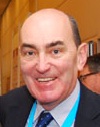The flavour of the third Microwave & RF Show that took place at the CNIT, Paris on 19 and 20 March was as French as foie gras and crème brûlée. The focus of the event was very much on the local RF, Microwaves, Wireless and Fibre optics community. International companies such as National Instruments/AWR, CST, ANSYS and Cobham Microwave exhibited alongside predominantly French companies and others from across Europe.
The Microwave & RF event ran alongside the 22nd edition of rts Embedded Systems and the 9thedition of Machine to Machine. There was particular focus on EMC, both among exhibitors and the conference with ‘Special EMC’ sessions organised by the AFCEM on both days.
Almost all presentations were given in French and other sessions included: Micro-package integration for microwave and millimetre-wave systems, Innovative materials for microwave that included the development of graphene and plastic packages for RF applications, Antenna technologies, Innovative radar applications and MIMO under the banner of: Multiple Innovations for Multiple Opportunities.
The exhibition saw a mix of companies involved in manufacture and distribution of products with local representatives being prevalent. Those of particular interest to Microwave Journal readers were:
ANSYS focused on the ANSYS 15.0, which offers additional capabilities in the electromagnetic suite that drives high-speed wireless communication.
Axon ‘Cable showcased its latest innovative products, which included the Micro-D combo connectors and lightweight coaxial cables.
AWR software enables microwave and RF engineers to design wireless products from base stations through cellphones to satellite communications and accelerates the design and product development cycle of high frequency ICs and systems found within the aerospace/defence, semiconductor, electronics and telecommunications markets.
Cobham Microwave introduced an L-band SMD limiter with very high power handling capability. This limiter achieves 300 W, 1 ms, 10% DC in a small QFN package (8.5 x 5.5 x 3 mm). Insertion loss is as low as 0.8 dB max, recovery time at 5 µs @ 100W and flat leakage at 12 dBm (typical). The company also introduced a new generation of connectorized power dividers for space applications that exhibits a significant size and weight reduction, while electrical performance is improved. X, Ku and K-band frequency ranges are covered with configuration from 1:2 up to 1:8.
CST offers a wide range of EM simulation software to address design challenges across the electromagnetic spectrum, from static and low frequency to microwave and RF, for a range of applications, including EDA & electronics, EMC & EMI and charged particle dynamics. The focal point of the product range is the CST STUDIO SUITE® with the 2014 version being demonstrated. This suite comprises a complete set of 3D electromagnetic simulation tools, along with a number of related products dedicated to more specific design areas such as cable harnesses, PCBs and EM/circuit co-simulation.
Deti offers a multioctave broadband range of combiners from 10 kHz to 6 GHz and for high power from 150 W to 12 kW. To widen this range the company offers power combining solutions for satellite Ka-band. Its latest design is a 16 way compact combiner which is highly compact and offers good performance for high speed military satellite telecommunications. Deti also highlighted a range of up & down converters for point-to-point or point-to-multipoint transmission.
Diconex announced a new range of Stripline Terminations that is claimed to offer the highest level of power on the market, combined with the widest frequency range in a size, enabling significant integration. Specially designed for digital TV transmitters, the products present a very low level for VSWR < 1.06 in the TV band, but the bandwidth facilitates many other RF applications such as particle accelerators.
National Instruments’ software-defined instrumentation is based on PXI RF instrumentation that covers the 20 Hz to 26.5 GHz range and whose functionality is highly customizable with NI LabView system design control software. The company demonstrated how its NI reconfigurable I/O (RIO) technology can be used for RF and microwave applications specific to visitors to the event, such as radar. NI RIO enables users to define their own custom measurement hardware circuitry using reconfigurable FPGA chips and LabVIEW graphical development tools. The RIO core includes an FPGA chip and surrounding circuitry that enables LabVIEW to perform hardware synthesis.
Nexio Group has developed BAT-ELEC software, which realizes transitional electrical tests compatible with generators of all customers and for all civil (ex IEC 61000-4-4/4-5), automotive (ex ISO 16750-2) or aeronautic standards.
Printech Circuit Laboratories has the capability to manufacture metal backed circuits, flexible and Flexi-rigid circuits. Two recent innovations are ‘bump’ selective plating to 250 µm and the manufacture of ‘formed’ antennas/filters that can be closely placed around a product.
Temex Ceramics focused on a number of products including the E7000 high Q factor dielectric material (E7000 with Qxf > 200 000 @ 10 GHz), which is required in high-end filters for space applications. The company has developed dedicated materials and processes for microstrip circulators that mean that it can offer state of the art ferrite substrates for a wide range of low or high power applications. The NHB series is a complete range of MLCC based on a NPO dielectric material which provides a very high Self Resonance Frequency at the highest working voltage in class – 500 V, from 0.3 pF up to 100 pF.

